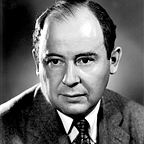Neuroscience
The Role of (in)Active Neurons in Creativity
Less deactivated neurons → higher semantic distances → more creativity?
Everything written in the following is speculative.
When staring at an object e.g. an extinguisher, all kinds of neurons activate while, simultaneously, some of these neurons gets deactivated (e.g. via top-down regulation or lateral inhibition).
The neurons that are deactivated are the ones not representing the object, in this case the extinguisher.
These deactivated neurons also don’t appear in your consciousness or working memory.
This is also the case when imagining something.
Less deactivated neurons → more creativity?
Now, here’s the interesting thought I had: When engaging in something like mindfulness, you don’t try to actively focus on something. Things appear in your consciousness and quickly disappear (that’s also one of the advantages of consciousness: the ability to think longer about things).
This, in turn, could make your brain deactivate less neurons, which in turn might allow for signals to propagate farther. This could promote the synthesis of concepts that have a much higher semantic distance, which one could experience as heightened creativity.
This is the case during diffuse mode/thinking.
